Glasswing’s Five-Stage Agent Autonomy Framework
The pace of AI development is accelerating at an unprecedented rate. Since the launch of ChatGPT in late 2022, annual global private investment in generative AI has soared to over $33 billion, up significantly from just over $5 billion in 2021. The global AI market is growing more than 30% annually, and as it does, a new type of AI-native technology is emerging as a dominant force: AI agents.
Glasswing Ventures views the rise of AI agents through a distinct lens. Being AI-originalist and frontier-tech investors since 2016, we backed the first generation of AI-native companies in enterprise software and cybersecurity, and we have remained at the forefront of every AI development over the past nine years. Our conviction has always been that AI is not another layer of software, but a generational shift in how organizations create value. Agents represent the next milestone in this shift. They build the bridge toward ambient AI, a world in which intelligence is no longer bolted onto workflows but becomes a constant, symbiotic partner in running the enterprise.
Yet, not all agents are created equal. Recently, the word “agent” has become a catch-all, a label slapped on everything from basic chatbots to sophisticated systems that actually do the work of enterprise businesses. The differences appear in the ROI.
A study conducted by MIT found that 95% of enterprise AI pilots fail to produce ROI not because the underlying models are weak or lack intelligence, but because the products built on top lack the capability, cognition, and resiliency required to effectively scale enterprise organizations. For agents that are designed to always be learning about the industry they serve and that carry a memory, however, the successes are real. Within the manufacturing industry, for example, agents like Retrocausal’s copilots have reduced factory-floor rework by 50%. Within data science, Featurebyte’s agent, which functions as an expertly trained data scientist, accelerates the data science lifecycle by 30x. The challenge today is for both business leaders and investors to discern the overstated agents from the irreplaceable ones.
To showcase the discrepancies between various agents and provide clarity on the AI agent revolution, Glasswing has developed a Five-Stage Agent Autonomy Framework. This framework maps the evolution of agents across three critical dimensions: impact – the measurable business value agents generate, capability – the technical actions and real work agents perform, and cognition – the reasoning and memory features that determine how flexibly agents can adapt. This framework defines the five stages that separate scripted responders from truly ambient systems, capturing today’s state of play while predicting where and how the next wave of business transformation will be unlocked.
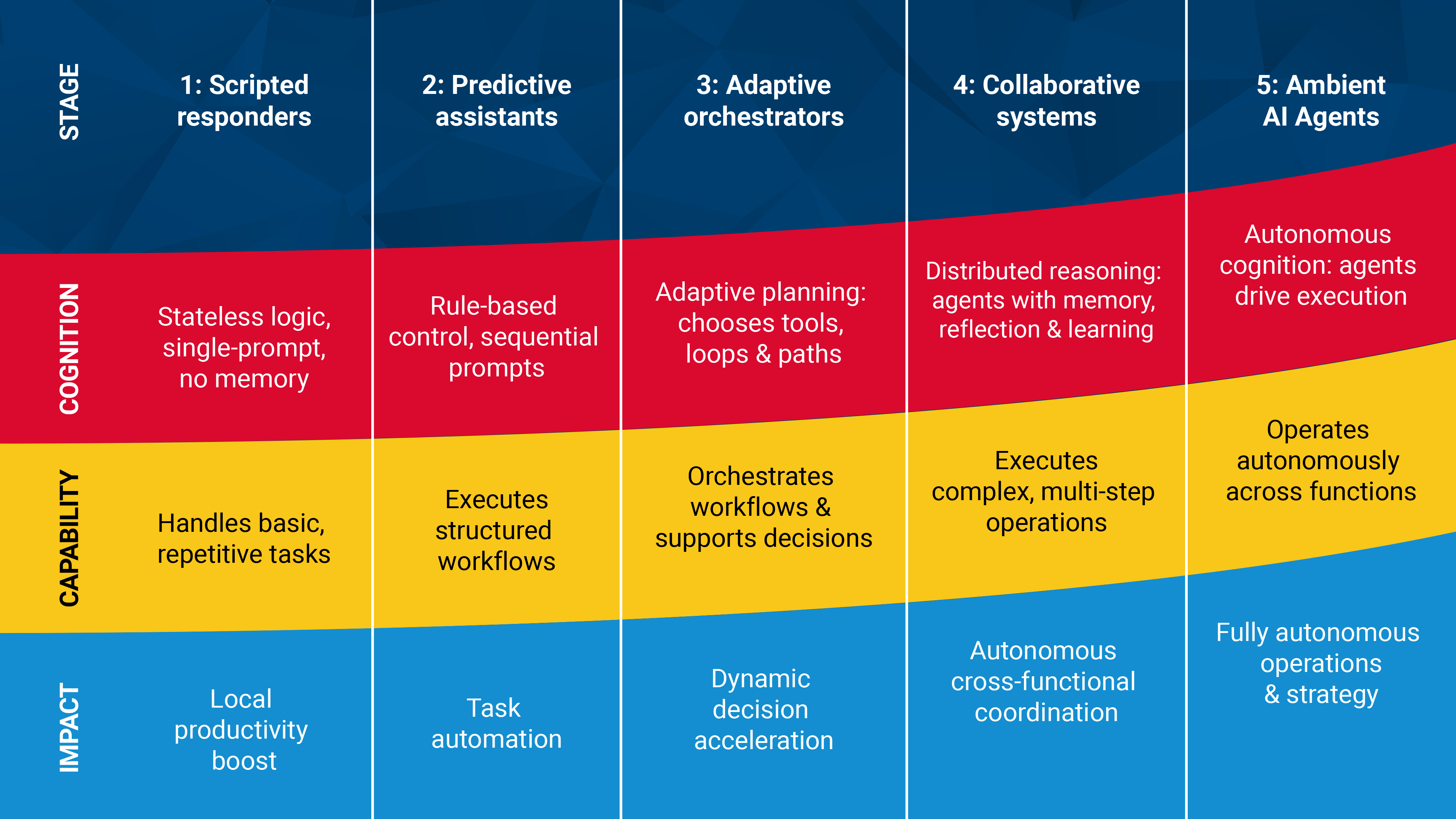
What do we mean by “AI Agent”?
Glasswing Ventures defines an agent as an intelligent system that can reason, take action, and complete multi-step tasks. While some agents may have once only been copilots confined to narrow tasks, they have since evolved into systems that can plan, act, and collaborate across workflows.
Glasswing’s Five-Stage Agent Autonomy Framework traces how an agent evolves across five stages of development, so one can see exactly how impact, capability, and cognition unfold in practice. To further bring the nuances of each stage to life, we use the familiar example of customer support.
Glasswing’s Five-Stage Agent Autonomy Framework

Stage 1: Scripted responders
Stage 1 agents are Scripted Responders, the most basic kind of agents. Their capability is limited to static pattern-matching: if the customer’s input matches a pre-defined phrase, the bot returns a pre-programmed answer, such as when a human presses 1 for billing or 2 for support and is automatically routed to the correct department. Anything outside that narrow workflow causes the system to fail. Cognitively, Stage 1 agents are inert. They have no reasoning, no memory, and no ability to learn from past conversations. Because they can only handle the simplest of questions, Scripted Responders provide minimal impact on enterprises.
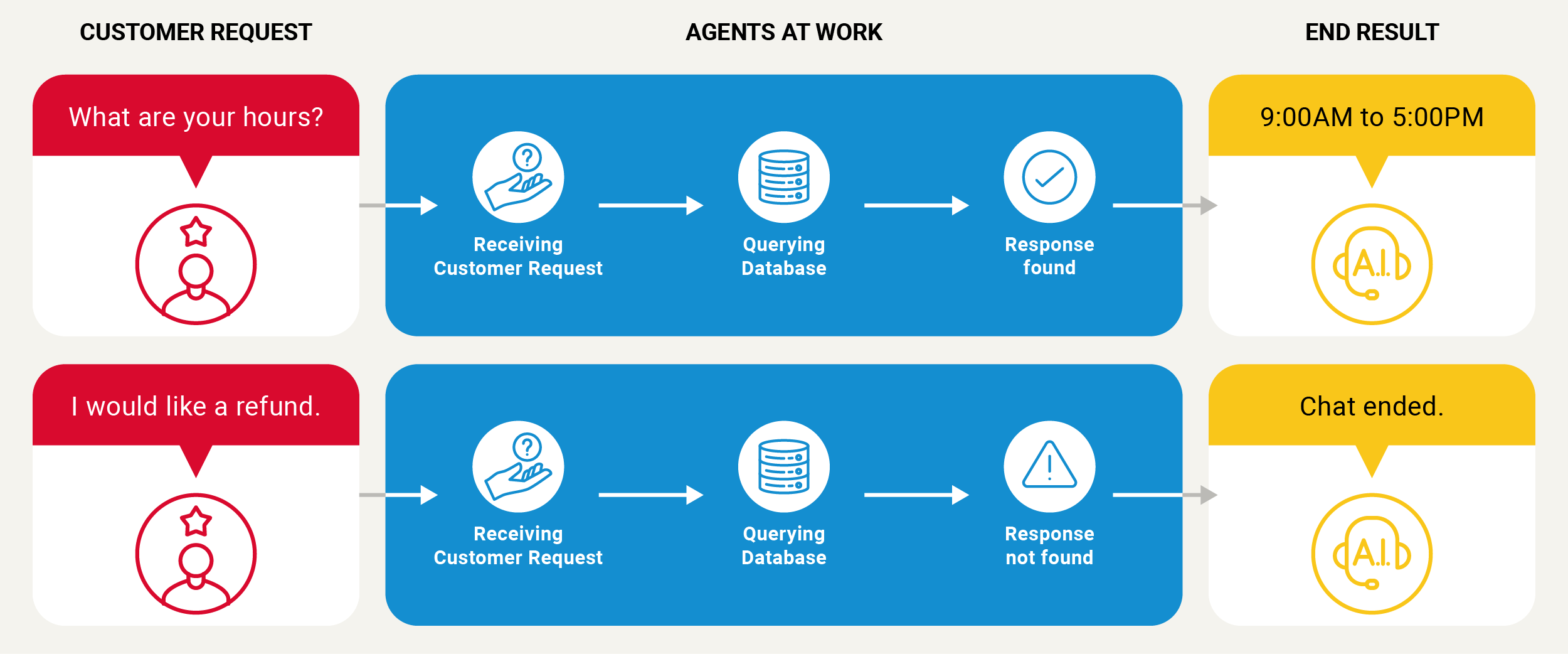
In customer support, a Stage 1 agent will answer FAQs like, “What are your store hours?” but will collapse if the customer phrases the question differently, such as, “Are you open tonight?” or asks something related to a different topic. These systems don’t improve over time and remain confined to rigid, well-defined problems. Far from saving effort, scripted responders often cause friction and frustration for both customers and support teams.
Stage 2: Predictive Assistants
Stage 2 agents, known as Predictive Assistants, dominate most of today’s agentic landscape. They mark the beginning of real automation, but only in narrow lanes, and their impact is modest yet noticeable. Predictive assistants can complete simple, structured, end-to-end tasks, such as checking an order status or scheduling a callback, and their capabilities extend slightly beyond those of Stage 1 agents.
Predictive assistants can recognize the intent behind a request so that similar questions like “When do you close?” and “What are your hours?” route to the same answer. They can pull out details like dates or numbers and call basic external systems to fetch information, allowing for some flexibility in predefined flows. In Stage 2, cognition remains shallow. While agents can track context within a single session, they forget the session immediately afterward.
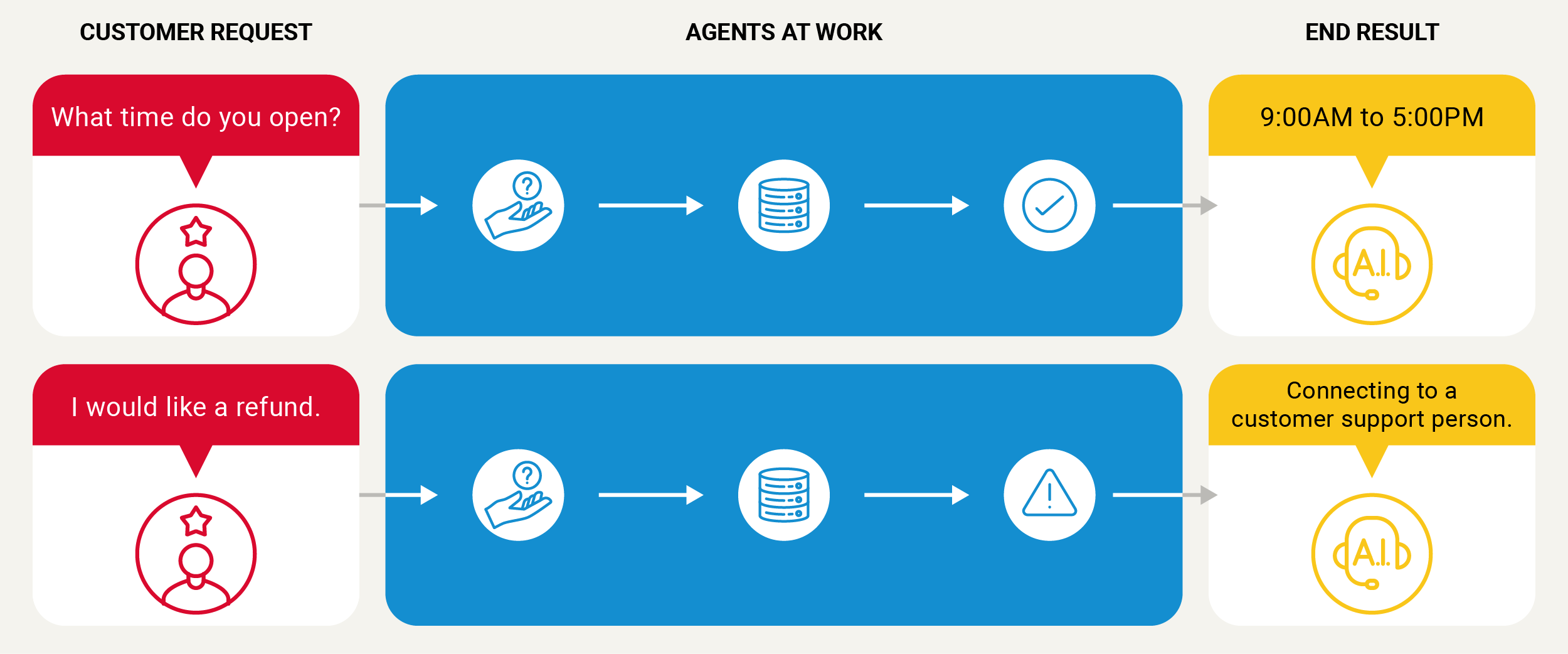
In customer support, a Stage 2 agent can recognize a request to return a product, ask for the order number, and generate a return label. However, the moment the customer adds nuance or complexity, the system stalls. For example, a support agent scripted to handle “Where’s my order?” can retrieve a tracking number, but if the customer then asks, “Can you reroute it to a new address?” the system collapses, as that action is beyond the boundaries of its pre-defined flow. This brittleness explains why most agents in production are stuck at Stage 2, and why so many pilots fail. Predictive Assistants shine in demos but falter in live settings when changes occur.
Stage 3: Adaptive Orchestrators

Stage 3 agents are Adaptive Orchestrators. They begin to reason, adapt, and deliver real business value, and their capabilities expand beyond following a single predefined flow to orchestrating actions across multiple systems such as CRM platforms, ticketing tools, and inventory databases. Cognitively, Adaptive Orchestrators develop contextual reasoning and working memory. They can sustain multi-turn conversations, remember key details across sessions, decide which system to query next, and escalate conversations intelligently when required. Unlike earlier stages, Stage 3 agents don’t immediately forget an interaction as soon as it happens. Rather, they are able to keep track of a customer’s problem as it unfolds. Stage 3 is where agents start moving the needle on business KPIs, driving operational efficiency as resolution times fall, reducing costs as more tier-one issues are resolved without escalation, and lifting customer satisfaction scores.

In our customer support example, a Stage 3 agent can handle a return request end-to-end: checking the order history, updating the CRM, issuing a refund, and even adapting mid-conversation if the customer clarifies or changes course. Additionally, because Stage 3 agents orchestrate across systems and sustain context, interactions with the agent no longer feel like brittle scripts. The agent plans, adjusts, and weaves systems and context into a coherent experience that makes the interaction feel collaborative rather than transactional.
Stage 3 marks the transition between pilots that fail and pilots that succeed. Only a minority of enterprises have reached this level, but those that do consistently deliver ROI.
By automating the data entry and cross-confirmation of prescription records in an environment where clincial safety and regulatory precision leave no room for shortcuts, Asepha’s OCR and Data Entry Automation Agent reduces prescription processing time from seven minutes to 15 seconds.
Stage 4: Collaborative systems
Stage 4 agents, Collaborative Systems, extend orchestration into collaboration. Whereas Stage 3 agents adapt within a single workflow, Stage 4 agents scale across multiple workflows at once, functioning less like a single assistant and more like a coordinated team. Stage 4 agents provide a substantial impact to enterprises, as entire processes can run end-to-end without human intervention, reducing operational costs and accelerating throughput. In Stage 4, agentic AI shifts from being a single adaptive agent to a modular system of sub-agents, each specialized for different tasks. This distributed setup allows Collaborative Systems to handle complex, multi-step workflows in parallel, operating like a team working together rather than a single employee completing a task. Cognitively, agents within Stage 4 develop reflection: they critique their outputs, retry failed steps, reconcile conflicting data, and improve over time as a result.
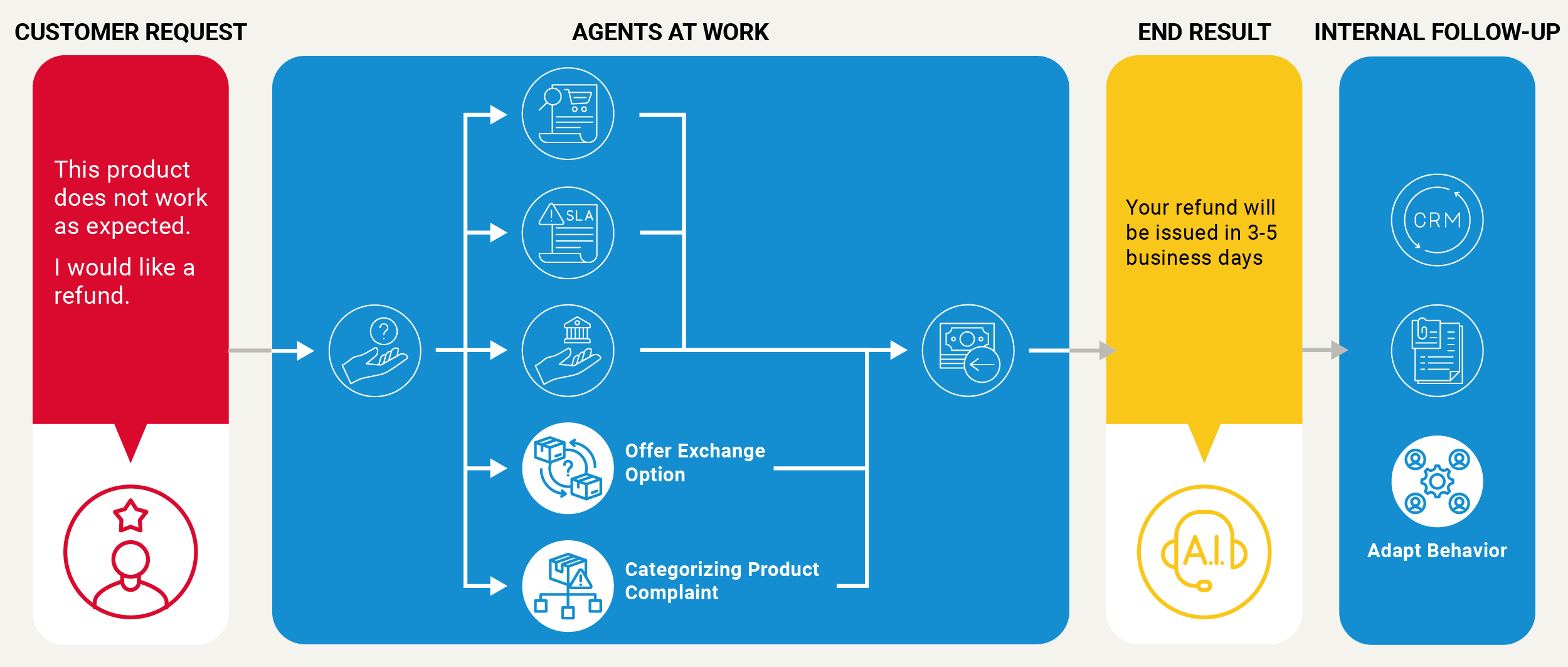
In a Stage 4 customer support example, now every customer interaction requires a multitude of agents. While a customer may interact with only one agent on the front end when requesting a refund, for example, a multitude of other agents operate in the background to complete the assignment. One agent validates the data, another pulls documentation, a third checks SLA violations, and a fourth initiates the refund. Work is divided and parallelized, making the process faster, more resilient, and less error-prone. If one component stalls, such as if the payment processor fails, another agent retries or reroutes the request without disrupting the conversation.
It is at Stage 4 that, because of their advanced capabilities, agents begin to unlock new revenue streams for companies.
With AI agents that manage data ingestion, transformation, migration, and pipeline orchestration, TensorStax’s platform helps data engineers reduce their project timelines from years to months, enabling enterprises to be at the forefront of their industry.
Stage 5: Ambient AI Agents

Stage 5 agents, Ambient AI agents, signal the horizon of ambient intelligence, the notion that AI is so deeply embedded into an environment that it becomes invisible but ever-present. At Stage 5, AI systems unify all sources of business transformation, connecting conversations, documents, product data, and customer activity into a single, adaptive view of the business. These agents can integrate voice calls, chat transcripts, transaction logs, and product telemetry in real time. Compared to the previous four stages of agents, at Stage 5, the cognition of Ambient AI agents reaches a strategic level, enabling them to detect recurring patterns across thousands of interactions, update knowledge bases automatically, recommend product changes upstream, and dynamically reallocate staff and workflows to match live demand. Because they are not simply improving efficiency within workflows but reshaping how the business operates by influencing products, strategy, and decision-making at scale, Ambient AI agents provide transformational impact to enterprises, functioning as a core operating layer of the enterprise.
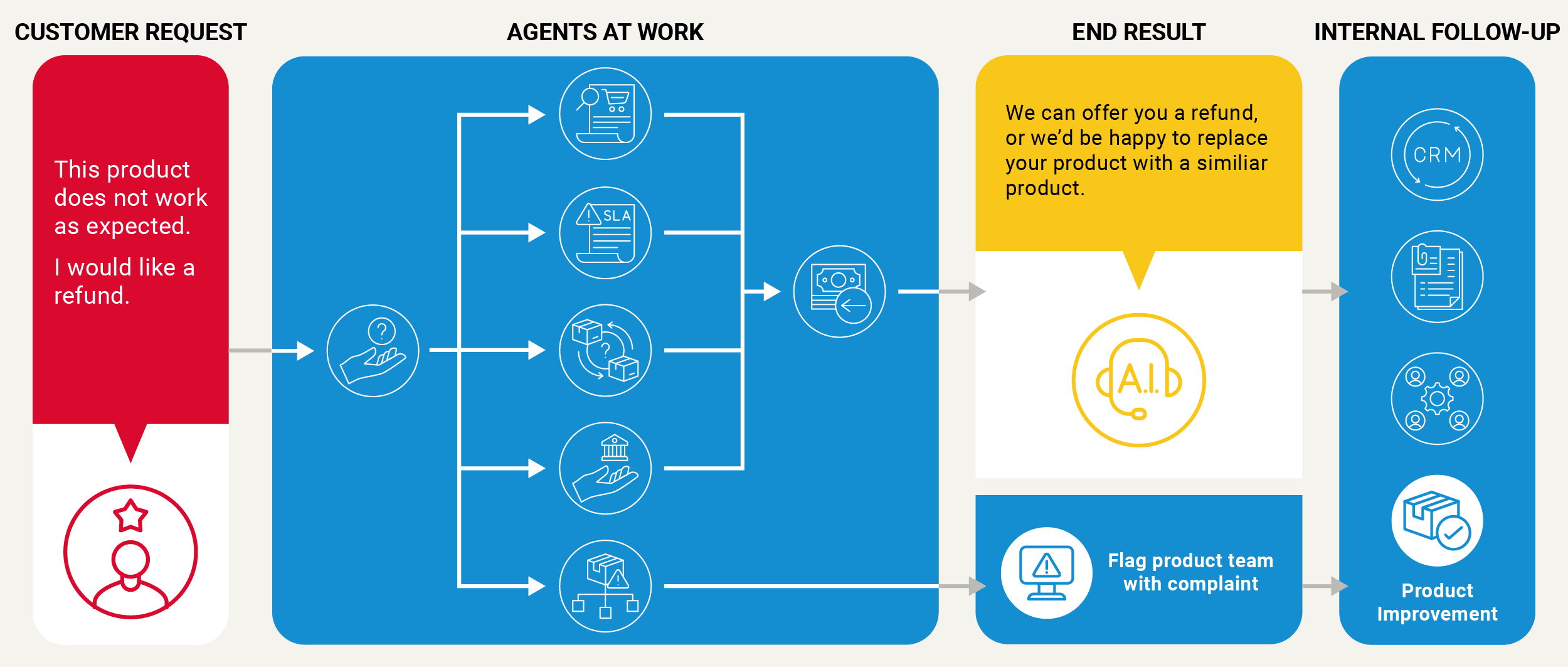
In practice, leveraging Ambient AI agents means that when customers raise the same issue to a company, the agents will not only resolve each ticket but also flag a potential defect, update troubleshooting guides, and alert the product team to resolve the root cause. At Stage 5, customer support ceases to be reactive and becomes a continuously self-optimizing system. Agents will restructure the support queue to prioritize similar cases and reallocate resources to handle any surges in cases. Here, humans shift into a strategic rather than an operator role, setting high-level goals that agents translate into complex tasks for autonomous planning and execution.
While the timing of such evolution is based on assumptions and represents our best forecast, we believe early forms of Stage 5 agents are likely to appear between 2027 and 2029 as organizations unify their data systems and adopt models capable of reasoning across modalities. By 2032, these agents may operate at scale, analyzing live data, updating knowledge automatically, and shaping strategy in real time.
By continuously learning across workflows and adapting faster than competitors, Ambient AI agents open new revenue opportunities for enterprises by enabling expansion into adjacent markets and establishing durable competitive differentiation. At Stage 5, agents are no longer tools supporting the enterprise but irreplaceable, embedded intelligence.
Why Agents Now?
Agents are not just a new interface. Their evolution reflects deeper technological advancements and business readiness across the AI landscape.
- Infrastructure Readiness. Agents draw on the reasoning, language understanding, and tool-use capacity of foundation models to move from passive responders into execution-oriented systems. Foundation models such as OpenAI’s GPT family, Google’s Gemini, and Anthropic’s Claude have developed into accessible, reliable, and increasingly commoditized platforms robust enough to support more advanced agents.
Equally important, the scaffolding around these models has advanced. Orchestration frameworks such as LangChain and AutoGen provide standardized ways to chain reasoning steps and connect AI products to external tools. Integration protocols such as the Model Context Protocol (MCP) seamlessly connect agents to enterprise apps without requiring bespoke engineering. Guardrail systems such as AWS Bedrock Guardrails and Azure’s content filters add enterprise-grade safety and compliance to agents.
- Market readiness. In an environment where enterprise business leaders face mounting pressure to scale, CFOs scrutinize every hire, and CIOs struggle with fragmented systems, business units are looking to AI agents to help them do more with less.
Infinity Loop‘s AI agents take on the work of procurement consultants to help companies experience at least 12% in annual savings. Learn more ->
Glasswing Perspective
AI agents are emerging as one of the most promising developments in enterprise technology. At Glasswing Ventures, we view this moment with conviction shaped by experience. Having been early to the AI-native wave, we recognize both the scale of the opportunity and the reality of its limitations. Success will not come from grabbing at the flashiest tech on the market, but it will come from understanding where agents sit on the maturity curve, deploying them where they deliver real business value, and building toward deeper transformation. The winners in this new era will not be the companies that treat agents as novel interfaces, but they will be the companies that fully integrate agents into their workflows to function as operators and teammates, building the foundation of ambient intelligence.

Glasswing’s Five-Stage Agent Autonomy Framework provides the clarity required to navigate the agentic journey. By mapping impact, capability, and cognition across stages of development, it helps enterprises, founders, and investors cut through the noise, identify what is ready, and prepare for what comes next.
If you’re building an agentic platform for the enterprise B2B and/or cybersecurity markets, send us an email at info@glasswing.vc.